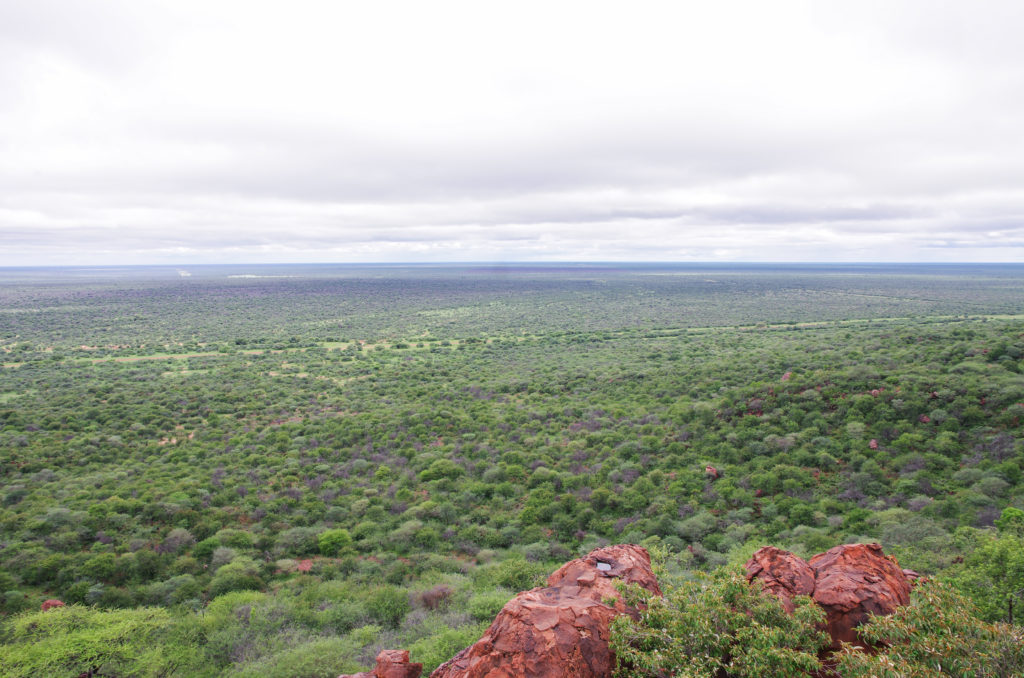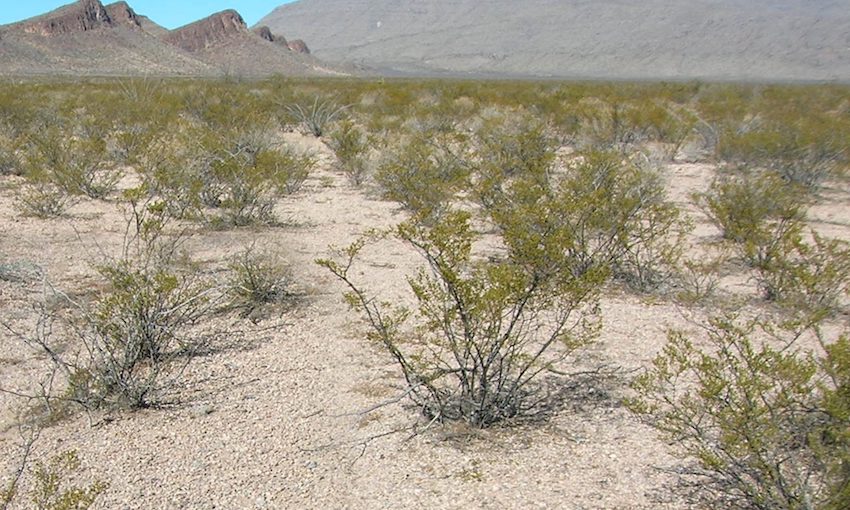Featured Image: Sparse woody plant encroachment, known as xerification, occurs here in the Chihuahuan Desert north of Coyame, in Chihuahua, Mexico. Source: Ricraider / CC BY-SA via Wikimedia Commons.
Paper: Woody Plant Encroachment has a Larger Impact than Climate Change on Dryland Water Budgets
Authors: A.P. Schreiner-McGraw, E.R. Vivoni, H. Ajami, O.E. Sala, H.L. Throop, and D.P.C. Peters
Almost half of the land on Earth is arid, with little precipitation. Arid lands are home to roughly 20% of the world’s human population, and to much of the world’s livestock as well. Arid lands are changing rapidly, both with respect to land cover and water availability. While the effects of climate change on arid places have attracted a lot of attention, the encroachment of woody plants into grasslands is also rapidly transforming arid landscapes. New research shows that the effects of woody plant encroachment are even more important than climate change for the water budget of arid ecosystems.
There are two different ways that woody plant encroachment can transform a grassland. One way, called xerification, occurs when grasses are replaced by sparse woody shrubs separated by extensive patches of bare soil. The other way, called thicketization, occurs when grasses are replaced by dense thickets of woody vegetation. Many of the causes of woody plant encroachment are associated with how people use land, including preventing fires, grazing livestock, and breaking up large grasslands with development. Other causes include changes in precipitation and increasing atmospheric CO2 concentrations (Stevens et al. 2016). Because these are also associated with climate change, it may be difficult for scientists to separate the impacts of woody plant encroachment and climate change on arid lands. In this research, computer models helped scientists disentangle some of these effects.
In this study, the authors were primarily concerned with change in groundwater recharge, the amount of water that percolates into the ground and increases the amount of stored groundwater. To better understand how woody plant encroachment and climate change affect groundwater recharge, the authors used a computer model to simulate how water moves through a small New Mexico watershed. To simulate the effects of xerification and thicketization, they manipulated the proportions of grass, shrubs, and bare soil in the model. To determine the effects of climate change, they simulated weather in our current climate and the climate near the end of the 20th century using the RCP8.5 scenario, the most severe climate change scenario considered by the International Panel on Climate Change. They first tested the effects of climate change and woody plant encroachment separately and then tested them together.

In today’s climate, the researchers found that groundwater recharge increased with xerification. Their model showed that runoff occurred quickly after rain on bare soil patches, and then it flowed to streams where it could infiltrate through very permeable stream beds. On the other hand, thicketization decreased groundwater recharge. In this case, the model showed that more rainwater infiltrated where it fell, in places where there were more plants to use this water and return it to the atmosphere. While climate change alone had different effects depending on the climate model used, when woody plant encroachment and climate change were tested together, the change in groundwater recharge reflected what would happen with woody plant encroachment alone. This suggests that woody plant encroachment is more important than climate change for the future of groundwater availability at this site, even in the worst-case climate change scenario.
For communities living in arid places across the globe, the question of future water availability is a pressing one. While climate change will have far-reaching effects, the results of this study show that woody plant encroachment will also play an important role in determining future water availability in these communities. Xerification may help water managers increase the amount of groundwater available; however, it could put them in conflict with rangeland managers who may prefer grasslands for grazing livestock. In environments where thicketization is common, people may need to intervene to maintain grassland ecosystems for both groundwater resources and livestock. Beyond human use, woody plant encroachment will have important consequences for ecosystems across arid environments. While climate change makes the biggest headlines for environmental change, other factors must also be explored as we work to better understand and manage the landscapes we live in.
Works cited:
Stevens, N., Lehmann, C. E. R., Murphy, B. P., & Durigan, G. (2017). Savanna woody encroachment is widespread across three continents. Global Change Biology, 23(1), 235–244. https://doi.org/10.1111/gcb.13409
Thickets and patches: woody plants are changing water availability in dry landscapes by David Litwin is licensed under CC BY-SA 4.0

